
Honors 301T is a seminar on "History of Life" for non-science
majors in our CSUF Honors program. Although students also had the option of later completing this field trip
to the La Brea Tarpits on their own, I was pleased that over half of the students showed up on this
Saturday morning to explore the museum together. I was also really looking forward to the visit, and was not disappointed.
I was excited to see how the museum was updated in a recent remodel or even earlier because I have not visited it
in recent years. The museum is even cooler than ever.
| 
-
| 
-
|
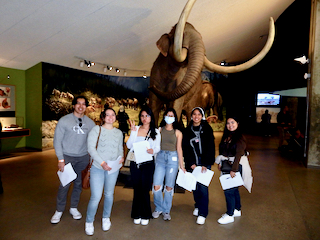
-
| 
-
| 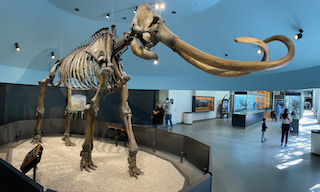
-
|

-
| 
-
| 
-
|
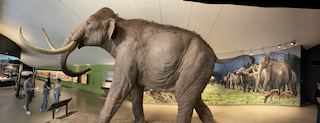
-
| 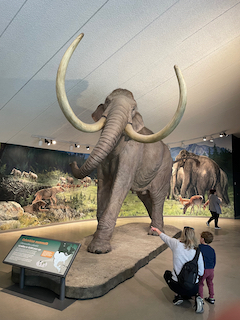
-
| 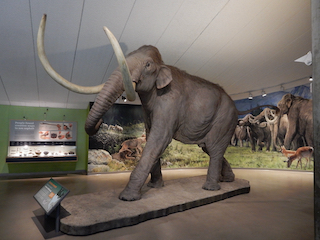
-
|
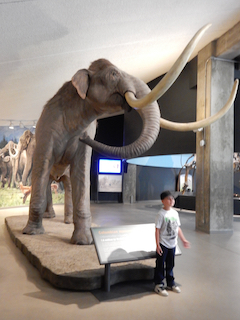
-
| 
-
| 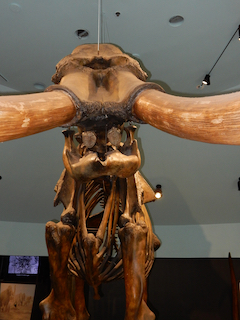
-
|
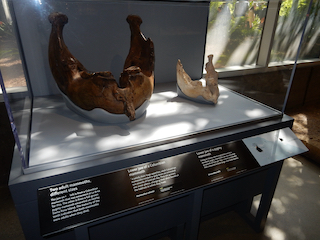
-
| 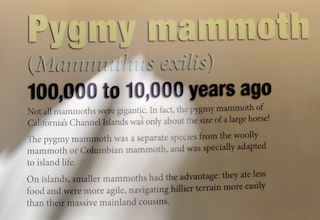
-
| 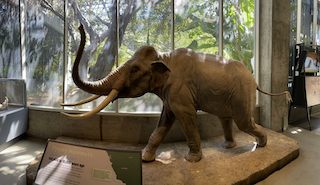
-
|
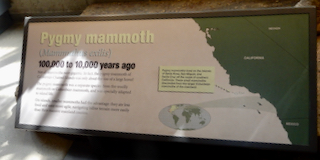
-
| 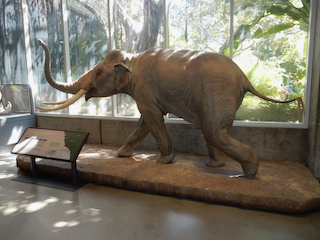
-
| 
-
|
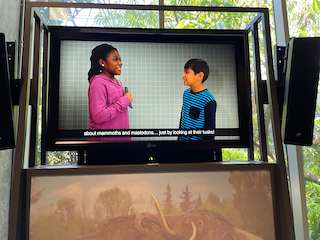
-
| 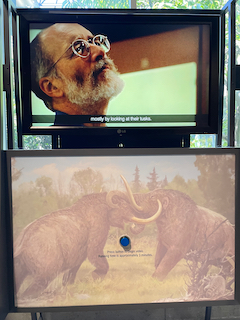
I was happy to see my former University of Michigan colleague,
Professor Dan Fisher, featured in a movie about pygmy mammoths. He is an expert on mammoths and mastodons in general.
See here for Prof. Fisher's university
web page, where there is a cool movie of a rotating scan of Lyuba, an intact baby wooly mammoth discovered not long ago (see next images).
| 
-
|

-
| 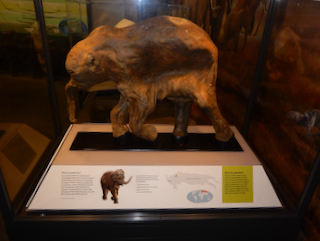
-
| 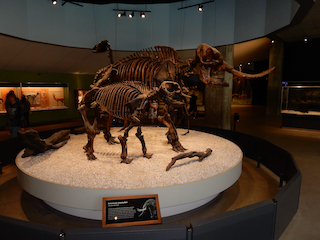
-
|
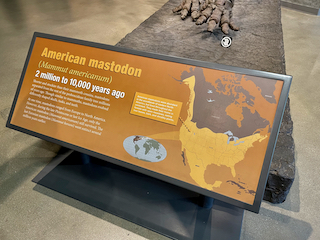
-
| 
-
| 
-
|
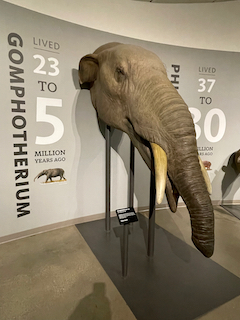
-
| 
-
| 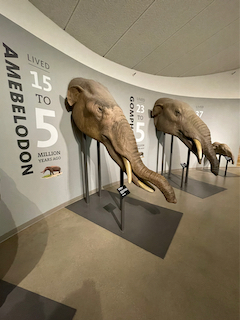
-
|

-
| 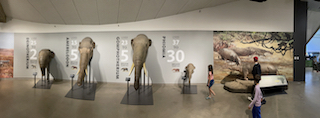
-
| 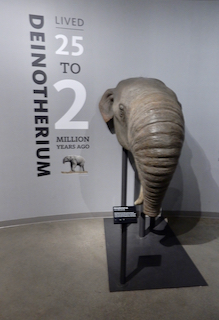
-
|

-
| 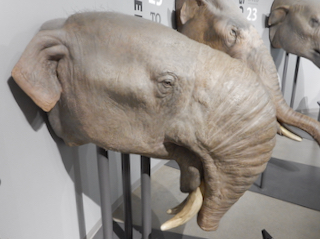
-
| 
-
|
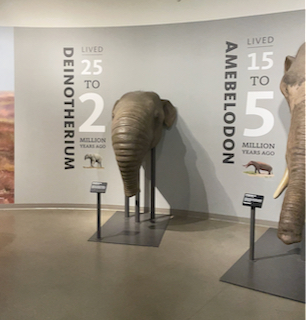
-
| 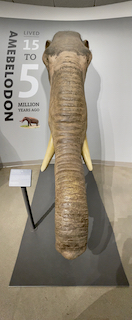
-
| 
-
|

-
| 
-
| 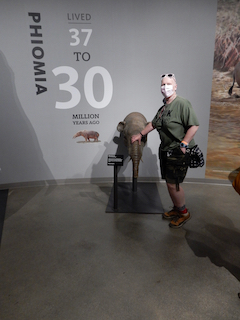
-
|
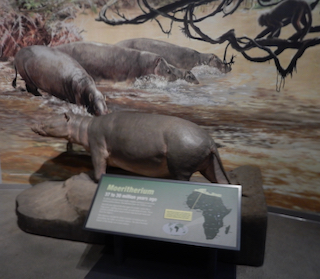
-
| 
-
| 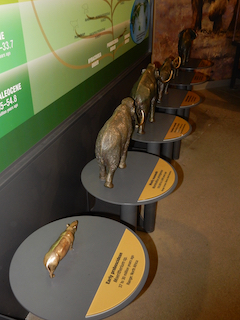
-
|
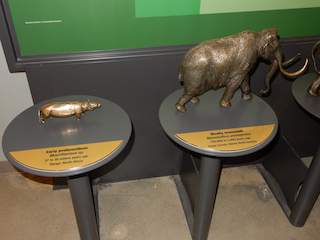
-
| 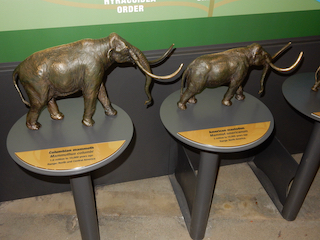
-
| 
-
|
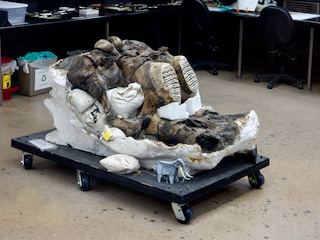
-
| 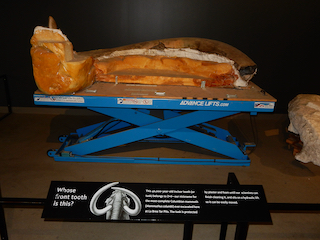
-
| 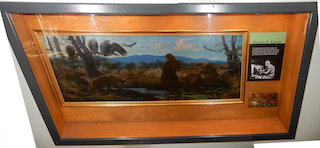
Charles R. Knight is a beloved illustrator of fossil beasts for paleontologists and others
worldwide. His illustrations brought prehistoric beasts to life. As the placard mentions, this painting is similar to a 30-foot long
mural that is still displayed at the connected Natural History Museum of Los Angeles Co., Exposition Park. See
here for a biography on Charles R. Knight.
|
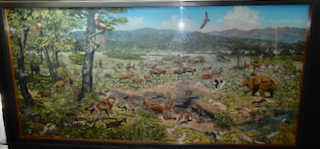
-
| 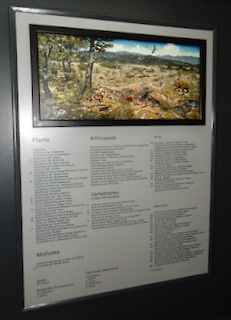
-
| 
-
|
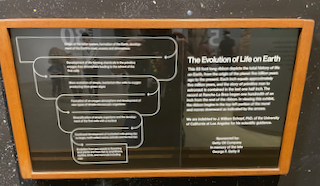
-
| 
-
| 
-
|
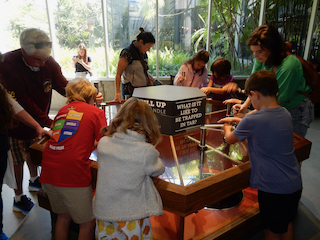
-
| 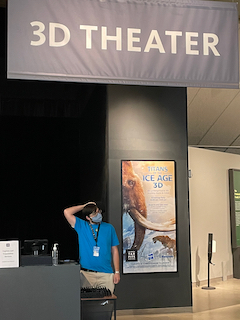
The museum's Titans of the Ice Age 3D movie was fun! I recommend springing for the extra $6 it costs to see it.
The theater was nearly full but there seemed to be room to see the show, which repeats every half hour.
| 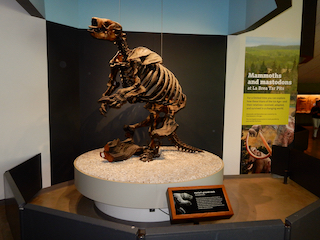
-
|
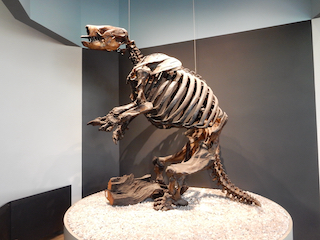
Paramylodon harlani (Owen, 1840) or Harlan's ground sloth
| 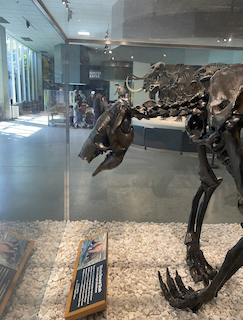
-
| 
Nothrotheriops shastensis (Sinclair, 1905)
or Shasta ground sloth
|

Smilodon fatalis (Leidy, 1868) or sabertoothed cat attacking a ground sloth
| 
-
| 
-
|
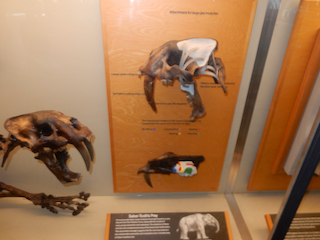
-
| 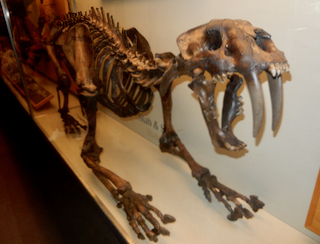
-
| 
-
|
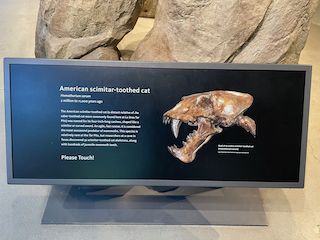
-
| 
A different species of sabertoothed cat, Homotherium serum (Cope, 1893)
| 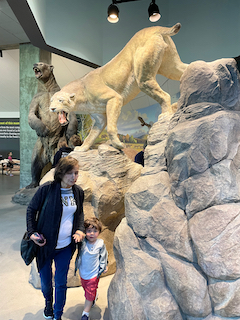
-
|
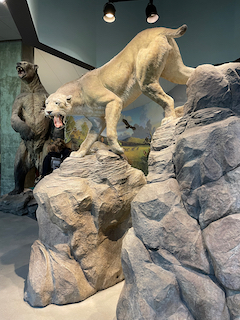
-
| 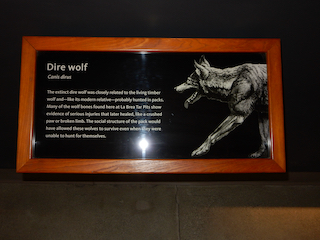
-
| 
Truly impressive 404 (*) dire "wolf" skulls on display at the La Brea Tarpits
Museum. I put wolf in quotes because a recent study by Perri et al. (reviewed at link below) rejected the long-held view of being
a close cousin of the gray wolf. The gray wolf is now viewed as only recently migrated to North America from Eurasia,
re-encountering the dire "wolf" whom the gray wolf only shares a surprisingly distant Pliocene last common ancestor
about five million years back. The gray wolf's closer kin are various fox lineages, which implies that the dire wolf's
wolf-like features are instead a spectacular example of convergent evolution. This has been postulated to be a result of a
similar predatory lifestyle in each species.
Based on this new evidence for its only distant relationship, the dire wolf has been moved from the familar genus, Canis,
and since 2021 is now Aenocyon dirus (Leidy, 1858). The revived genus name, introduced in 1918 by Merriam, means terrible wolf
in Ancient Greek.
(*Wikipedia) See
here for a brief review of the Perri et al. paper.
|
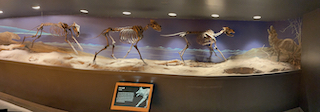
-
| 
-
| 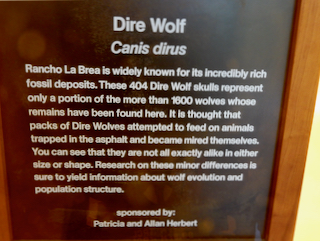
-
|
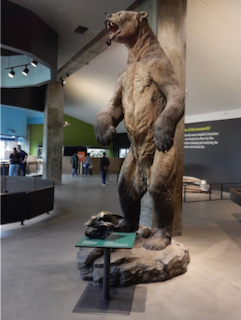
There was nothing very short about the giant short-faced bear,
Arctodus simus (Cope, 1879), the larger of two North American species in this genus. In fact, according to
Wikipedia, it was one of the largest terrestrial carnivores to have ever lived. It went extinct, about the same
time as many other North American so-called mega-fauna species, about 12,000 years ago.
| 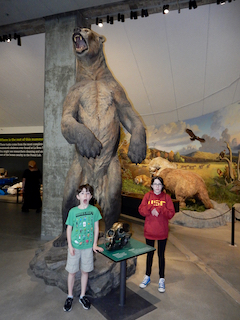
-
| 
-
|
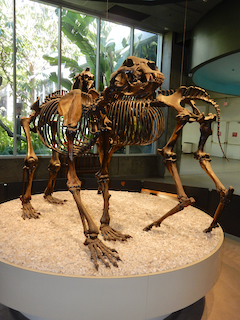
The American lion (currently Panthera leo atrox) was another large predator that lived
in what is now Los Angeles.
| 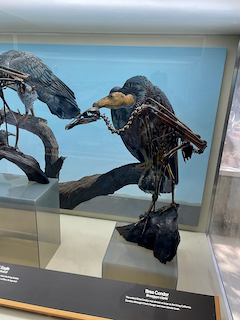
-
| 
There is a good assortment of recently extinct dinosaurs
at the La Brea Tarpits Museum.
|
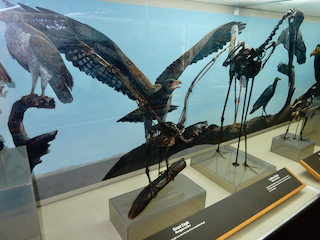
-
| 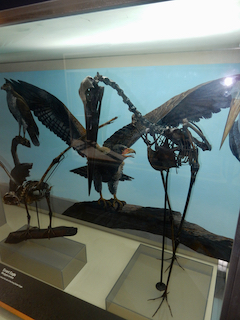
-
| 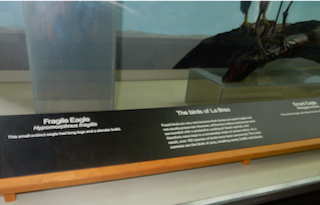
-
|

-
| 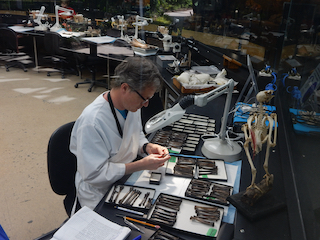
-
| 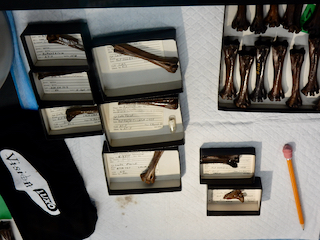
-
|
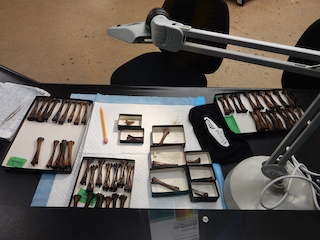
-
| 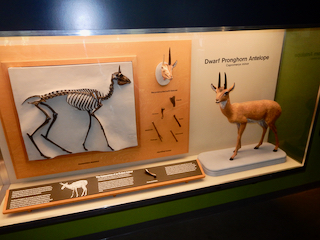
-
| 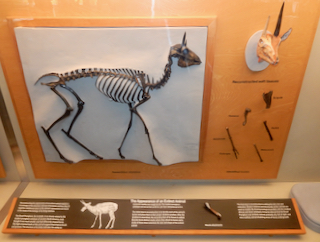
-
|
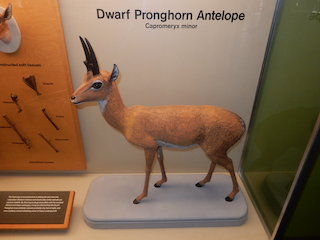
Capromeryx minor Taylor, 1911 (dwarf pronghorn) belong to a New World
family of antelopes, Antilocapridae, with only a single extant species, the pronghorn still found in places such as Montana. The closest living relatives of
members of Antilocapridae are the Old World giraffids (Giraffidae). Old World antelopes are part of the large related family, Bovidae,
which includes cattle, bison, goats, sheep, etc. See here for more details.
| 
Camels are a group that diversified in the North American Miocene,
and much later migrated to Eurasia. This Camelops hesternus (Leidy, 1854) or yesterday's camel, extinct like other North American
mega-fauna since the Late Pleistocene, was more closely related to familiar Old World camels than to another, mostly South American,
lineage of camelids that includes guanaco, vicuña, and their domesticated (hybrid) descendants such as the alpaca and llama.
The primary evidence came from sequencing frozen Camelops specimens exposed in permafrost in what is now Alaska.
| 
-
|

-
| 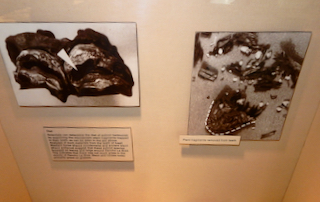
-
| 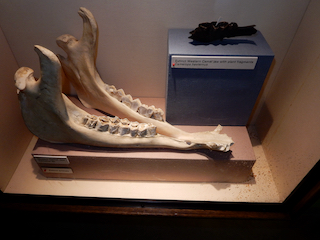
-
|

-
| 
Bison antiquus Leidy, 1852 or antique bison. Some authorities currently consider this as a
extinct subspecies of the smaller present-day bison, which survived the Late Pleistocene period. Collectively, this and the also "extinct" but
smaller Bison occidentalis, are examples of a paleontological species concept of chronospecies, which many have rejected (*). There
is strong evidence from ancient DNA studies that the various species or sub-species of bison were able to interbreed.
These led to modern bison (Bison bison). Older still was the steppe bison, which dates to the Middle Pleistocene in Eurasia,
but was later widespread at northern latitudes. Collectively, these bison were by far the most common large herbivores on the
North American continent in the Late Pleistocene, also up until the 1800s when they were hunted to near extinction.
(*) Chronospecies are "species along a single phyletic lineage that are distinguished morphologically from earlier and later forms. Often used for
convenience in paleontology, but it is an arbitrary subdivision of a continuous lineage which is why the existence of chronospecies is rejected by many." (Source:
Species Concepts in Biology : Historical Development, Theoretical Foundations and Practical Relevance, by Frank E. Zachos, 2016.)
| 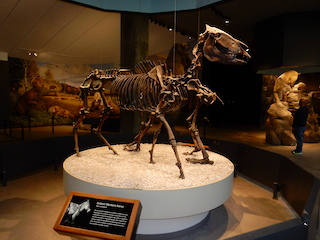
Equus occidentalis Leidy, 1865 or western horse,
went extinct in North America in the Late Pleistocene, among the last of the great diversity of horses that evolved and became especially
diverse in the Miocene Epoch of North America, but with pulses of spread to the Old World permitted by occasional land bridges.
The Spanish re-introduced horses to North America much later.
|
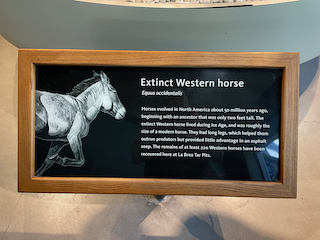
-
| 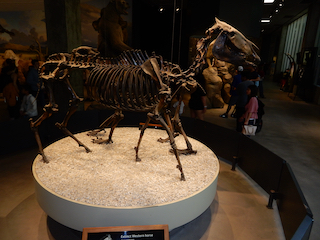
-
| 
-
|
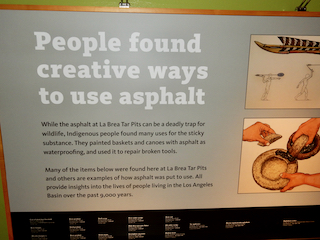
-
| 
-
| 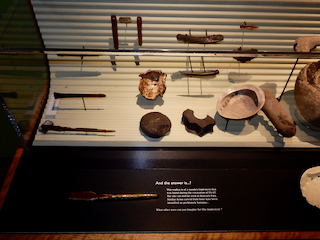
-
|

Ah, Baloney!!
| 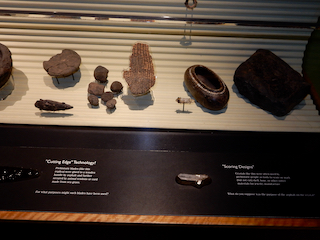
-
| 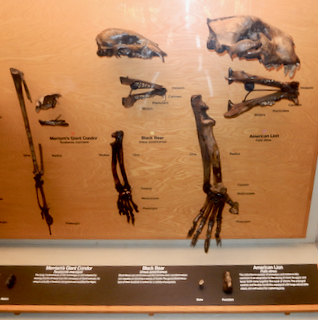
-
|
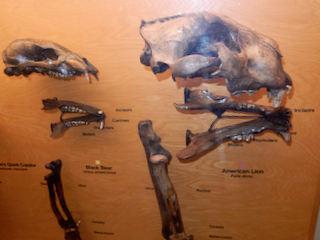
-
| 
-
| 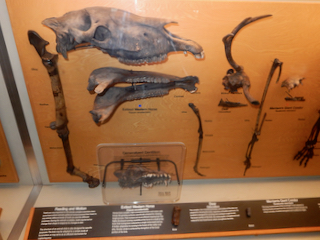
-
|
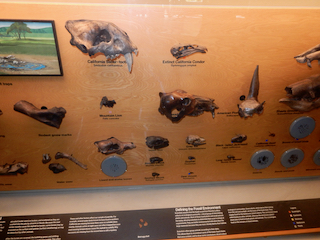
-
| 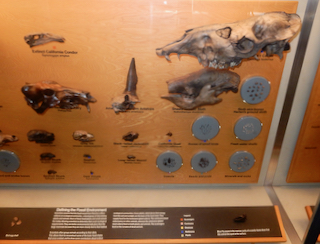
-
| 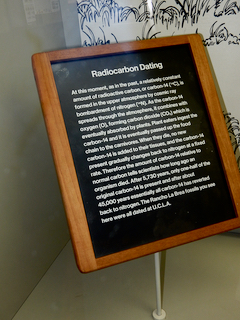
-
|

-
| 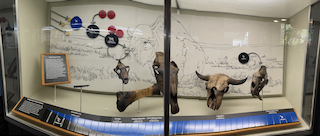
-
| 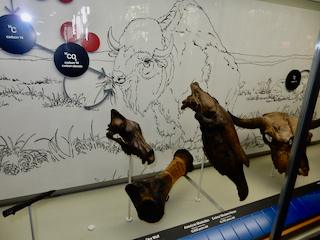
-
|
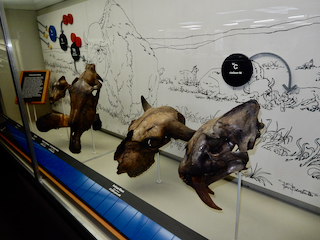
-
| 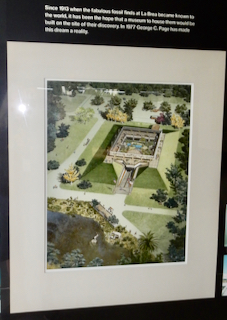
-
| 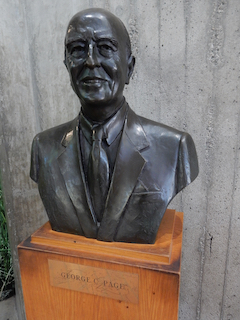
-
|

-
| 
-
| 
-
|

-
| 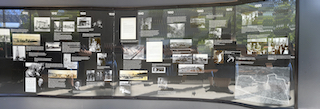
-
| 
-
|

-
| 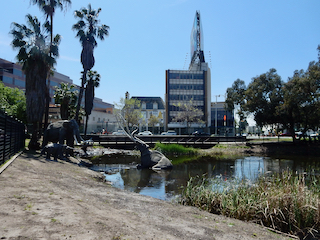
-
| 
-
|
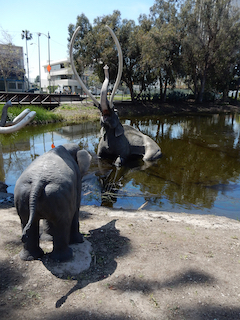
-
| 
-
| 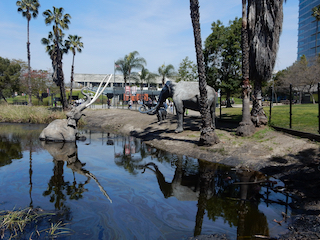
-
|
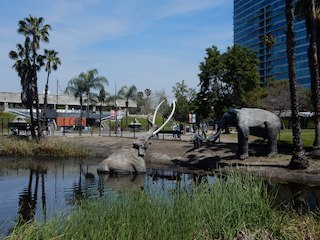
-
| 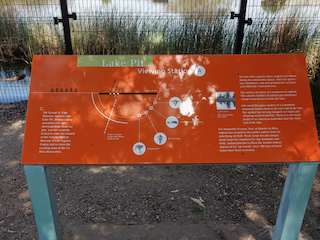
-
| 
-
|
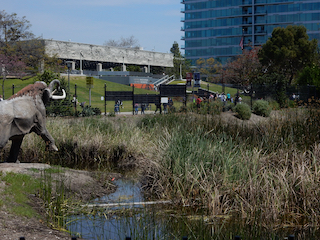
-
| 
-
| 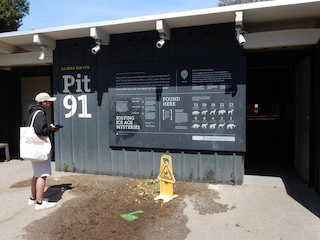
-
|

-
| 
-
| 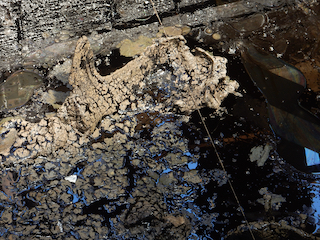
-
|

-
| 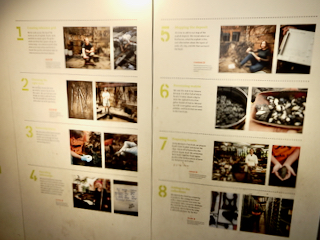
-
| 
-
|
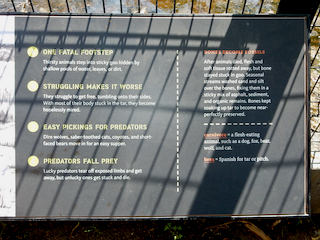
-
| 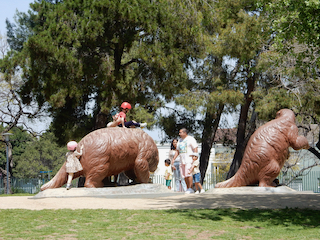
-
| 
-
|
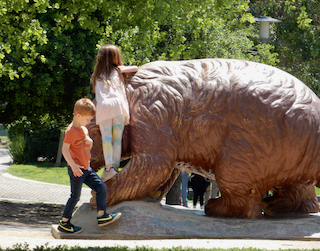
-
| 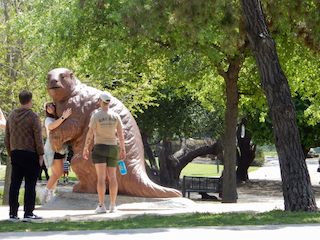
-
| 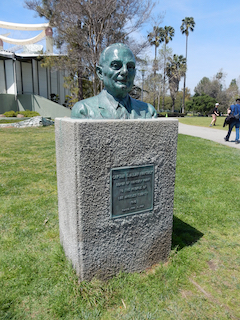
-
|
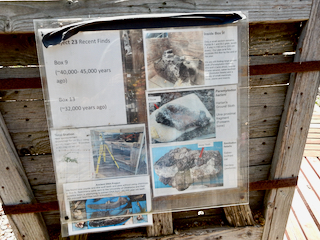
-
| 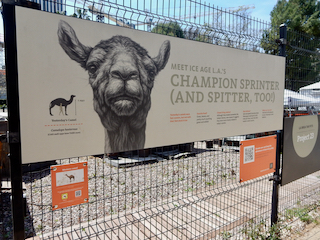
-
| 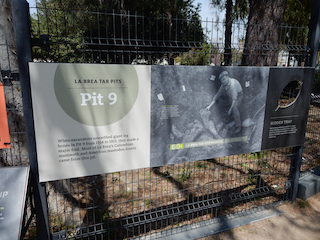
-
|
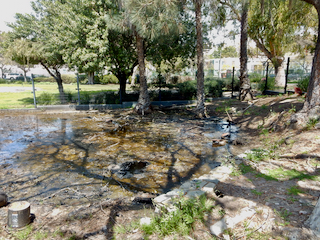
-
| 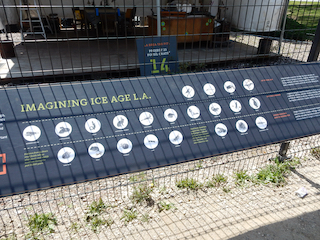
-
| 
-
|

-
| 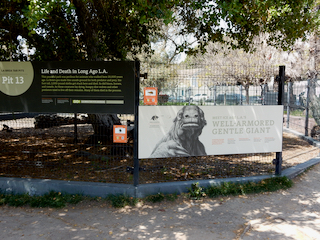
-
| 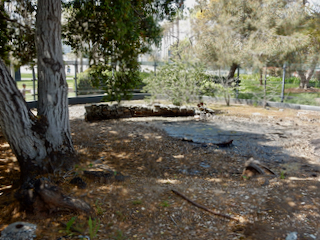
-
|
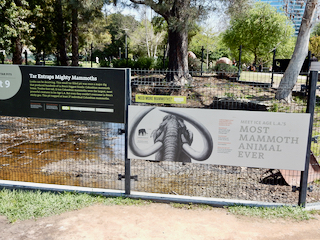
-
|
 Under Construction!
Under Construction! Under Construction!
Under Construction!